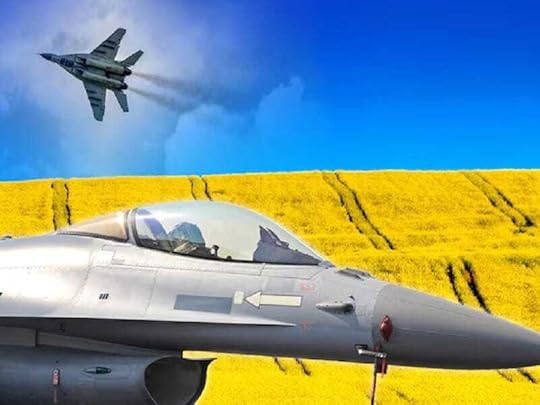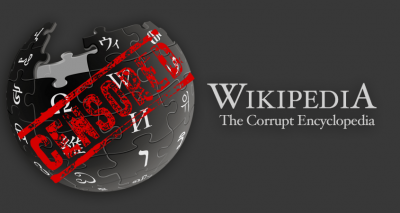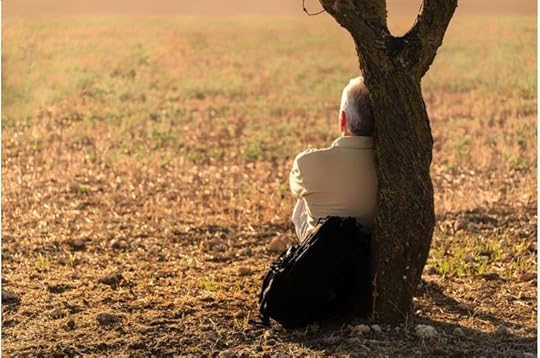Steve Bull's Blog, page 21
June 12, 2024
The Next Generation’s Dilemma: Confronting the Metacrisis

Today’s Reality Roundtable with Priscilla Trịhn, James Branagan, and Natasha Linhart, focuses on Generation Z’s perspective of the metacrisis, how learning the reality of the human predicament has affected their worldview, and what they see as viable future paths for themselves and the world. What are the unique challenges that young people face when addressing the layers of complexity and risk in the world, and thinking about how to respond?
Priscilla Trịnh currently serves as Director of Communications at the Post Growth Institute and co-coordinator of the Minnesota Youth Institute. She is also the creator of the #postgrowth jobs board and a founding member of The Overstory Alliance.
James Branagan is a content creator and video editor, posting content on slow living and philosophy from his channel, The New Naturalist. He’s committed to the task of addressing some of the many facets of Our Human Predicament, particularly education and food production systems.
Natasha Linhart graduated from the University of Amsterdam in 2023 with a degree in BSc in Politics, Psychology, Law and Economics with a focus in Economics and Business, and electives in Degrowth and Critical Theory. For the last year, she has been working as a Research Associate with the Institute for the Study of Energy and Our Future.
How might we approach intergenerational relationships to encourage the transfer of knowledge in both directions, without blame or resentment? Could fostering community, empathy, and personal responsibility act as a bridge across generational divides, steering us towards a more unified and compassionate future?
How to Make Wind Power Sustainable Again
If we build them out of wood, large wind turbines could become a textbook example of the circular economy.
 Illustration: Eva Miquel for Low-tech Magazine.
Illustration: Eva Miquel for Low-tech Magazine. For more than two thousand years, windmills were built from recyclable or reusable materials: wood, stone, brick, canvas, metal. When – electricity producing – wind turbines appeared in the 1880s, the materials didn’t change. It’s only since the arrival of plastic composite blades in the 1980s that wind power has become the source of a toxic waste product that ends up in landfills.
New wood production technology and design makes it possible to build larger wind turbines almost entirely out of wood again – not just the blades, but also the rest of the structure. This would solve the waste issue and make the manufacturing of wind turbines largely independent of fossil fuels and mined materials. A forest planted in between the wind turbines could provide the wood for the next generation of wind turbines.
How Sustainable is a Windmill Blade?
Wind turbines are considered to be a clean and sustainable source of power. However, while they can indeed generate electricity with lower CO2-emissions than fossil fuel power plants, they also produce a lot of waste. This is easily overlooked, because roughly 90% of the mass of a large wind turbine is steel, mainly concentrated in the tower. Steel is commonly recycled and this explains why wind turbines have very short energy payback times – the recycled steel can be used to produce new wind turbine parts, which greatly lowers the energy required during the manufacturing process.
However, wind turbine blades are made from light-weight plastic composite materials, which are voluminous and impossible to recycle…
…click on the above link to read the rest of the article…
Alien Planet Earth
The world of just a few lifetimes ago
Watching the climate change is like waiting for your hair to grow. You know it’s happening, but you can’t really tell from day to day. However, from a greater chronological distance, the damage humanity is inflicting on our planet is clear.Where I live, bats have disappeared over the past couple decades. I remember watching them swoop at the evening insects, a couple even finding their way into my house. Now I never see them.
Others speak about fireflies that no longer dance at night. Or windshields bare of insect residue.
While insects are still a significant portion of global biomass, we’ve increasingly become a planet of humans, human food and anthropogenic mass.
We’ve terraformed the planet to feed our insatiable needs, at nature’s expense. This myopic stewardship pushes the planet to the edge. Robust systems are diverse and redundant. Ours is monolithic and fragile.

 Source: Global human-made mass exceeds all living biomass
Source: Global human-made mass exceeds all living biomassWild animals are vanishing because humans are pushing them out and replacing them with domesticated animals. Today, it’s difficult to imagine what the world looked like hundreds of years ago, before we chopped down the old growth trees and overfished the oceans. Luckily, we have documented evidence from centuries past.
The photo below illustrates the sheer destruction humans can inflict.
“At the close of the 18th century, there were between 30 and 60 million bison on the continent. By the time of this photograph, that population was reduced to only 456 wild bison.” Source: The Conversation
 Michigan Carbon Works in Rougeville, Mich., in 1892.
Michigan Carbon Works in Rougeville, Mich., in 1892.I recently found several accounts from the first Europeans that explored and settled in the Chesapeake bay area. There were more fish to catch than could be preserved.
…click on the above link to read the rest of the article…
It’s Dangerous to Farm Alone
At the start of the famous video game, Legend of Zelda, a helpful old man says “It’s dangerous to go alone, take this.”
Surprisingly, the protagonist is then given a limited selection of technologies to use, so that they can then proceed, alone, on their adventure. I suppose the whole point of a video game is to push the limits of your character. If you mess up the worst outcome is waste a life.
Over the last several years I often wondered about the dynamics of the system I was building around me. Dairying animals in particular are a big commitment that need daily milking, with rare exceptions. Many times I had to grit my teeth and keep squeezing with an injured hand for days at a time. Fair is fair, I would say, since the girls would have to do the same if they had a scratch on their teat. Often I had to drag a sore leg around the paddocks for a few hours to move a fence. Only once did I have to skip milking when I was in the middle of a proper bout of flu.
Cropping is a little more relaxed in its timing, though without irrigation the window for sowing can pass from too wet or cold to too dry in a matter of days during some seasons. Harvest windows can be as long as fortnight for staple crops to a single morning for fruit (though the season itself usually lasts a week or more). All types of harvests have been missed at times and ended up either rotting on the ground or inside bellies smaller than mine.
…click on the above link to read the rest of the article…
Not Knowing

The verbs we use
to confirm or refute our acceptance
of the beliefs and worldviews of those we know,
comprise a sort of code, like
a hidden handshake, or a shaken fist.
We are asked whether we condone or condemn
a certain behaviour, but
the meaning of condone
(other than as a rarely-used synonym of gift)
dates back only to 1962: first deployed
as a barbed word
in the rhetoric of Cold War brinksmanship.
The words are straitjackets,
and you will be damned — condemned
if you do not wear them, willingly.
You must wear one or the other.
If you wear the condone jacket, you are evil,
a monster, an apologist,
and must be shunned by those seeing you wear it.
If you wear the condemn jacket, you are virtuous,
but must then also be prepared
to condone any retribution
for what you have ‘agreed’ to condemn.
This straitjacket is reversible.
You are with us, or you are with the enemy.
There is no third choice
of just trying to understand, of admitting
to not knowing, but asserting
there must be a reason for everything,
no matter how awful.
To those who condemn, that is condoning.
To those who condone, that is condemning.
Make up your mind, they say:
pick the bad guy, someone to blame.
Not knowing is not acceptable.
You cannot sit on a barbed-wire fence.
Perhaps this is why we are so aghast
at the possibility that we have no free will.
We will accept any explanation,
no matter how convoluted or lame
that grants us some control, some responsibility,
some room for blame and judgement.
After all, we could never do what they’ve done,
you know?
Kiev’s Plan To Store F-16s In NATO States Raises The Risk Of World War III

It can’t be ruled out that Zelensky might task one of his pilots with carrying out a mission directly from NATO territory without first stopping at a Kiev-controlled airfield in order to provoke Russia into striking the base from which it departed in self-defense.
Ukrainian Air Force head of aviation Sergey Golubtsov told US state-run Radio Free Europe/Radio Liberty in an interview over the weekend that Kiev plans to store some of its F-16s in NATO states for reserve and training purposes. While this might sound like a pragmatic policy, particularly since it would deter Russia from destroying its entire fleet since President Putin recently mocked speculation about him plotting to attack NATO as “bullshit”, it actually raises the risk of World War III.
To explain, although US Air Force chief Frank Kendell claimed last summer that the F-16s are “not going to be a game-changer” for Ukraine and Golubtsov himself confirmed in his latest interview that they’re “not a panacea and we do not wear rose-colored glasses”, both downplay the nuclear dimension. President Putin brought it up earlier this spring when he noted that “F-16 aircraft can also carry nuclear weapons, and we will also have to heed this while organising our combat operations.”
The Russian leader also warned that “we would see them as legitimate targets if they operate from the airfields of third countries, no matter where they are located.” Mutual mistrust between Russia and the US is at a record high and continues rising by the week, made all the worse by Ukraine’s recent attack(s) against Russia’s early nuclear warning systems that might have been tacitly approved by America. This comes as the US is playing a dangerous game of nuclear chicken with Russia.
…click on the above link to read the rest of the article…
June 11, 2024
Wikipedia: The Failed Experiment to Democratize Knowledge. “Character Assassinations,” Censorship, an Instrument of Global Corporatism

In this carefully researched article, Richard Gale and Dr. Gary Null underscore the inadequacies of Wikipedia as a reliable source of information and knowledge. The free encyclopedia is created, edited and verified by an army of online volunteers whose credibility and integrity are unknowable, even questionable.
The supposed separate entries for the Centre for Research on Globalization (CRG), Global Research (globalresearch.ca) and its editor-in-chief, Prof. Michel Chossudovsky, have been merged into a single Wikipedia item, which consists of unwarranted smears, unfounded claims and disputable accusations.
Such efforts by the largest reference website, consulted by billions of people worldwide, are supportive of the Establishment’s global agenda, which aims to discredit dissenting yet highly-knowledgeable and qualified scholars and activists (“character assassination”) and push their contributions and endeavors to the margins. This, in effect, denies their vision to share knowledge that “fully represents human diversity.” See Michel Chossudovsky’s biographical note here.
—Global Research, June 5, 2024
What Is the Solution to “the Wikipedia Problem”?
Wikipedia is the largest and most read reference source in the world. Billions rely on it every day for unbiased facts and truthful information. Unfortunately, what they often get are slander and lies. This poses an existential threat to society, because lies and slander corrode the fabric of society and harm all of its citizens, no less than they harm the ones who are lied about and slandered.
If Wikipedia were a marginal website with little influence, it could be regarded as harmless, just as you might regard it as harmless to be bumped by a toddler on a tricycle traveling at a snail’s pace – but not if you were run down by a pizza delivery boy on an electric bicycle travelling at 30 mph…
…click on the above link to read the rest of the article…
“We designed mRNA to kill” – CIA Whistleblower?

“In a world without laws, where might alone makes right, all of us will ultimately be the losers.” —Jonathan Cook
And this by Scott Ritter:
“In a war of attrition, grinding the enemy down is just the first part. Stretching what remains until it breaks is how you finish the job.”
Scott is, of course, referring to the US / NATO (Ukraine) war against Russia; the latter being close to finishing the job.
The same war-time allegation or strategy, is taking place now in our “civil” (not to confuse with civilized) world, where we, the People, are gradually extending our knowledge of crimes committed during the past hundred-plus years by a powerful clan of elites, coming to culmination in the past four years – is like stretching the enemy, the all-powerful elite, to the breaking point. This crucial moment is near – it is only a question of time, but irreversible.
Light is overcoming darkness.
 Many of us knew it all along, that the mRNA vaxxes are made to kill, are part of the depopulation agenda, compliments of the World Economic Forum (WEF), especially Klaus Schwab, who prides himself having authored the Great Reset, concluding in “You will own nothing but be happy”.
Many of us knew it all along, that the mRNA vaxxes are made to kill, are part of the depopulation agenda, compliments of the World Economic Forum (WEF), especially Klaus Schwab, who prides himself having authored the Great Reset, concluding in “You will own nothing but be happy”.
The UN Agenda 2030, which is supported by the UN Secretary General Mr. Antonio Guterres, a gutless character put in this position and prolonged in this position by the United Sates, sounds like the God-given salvation for humanity, with its 17 Sustainable Development Goals (SDG). Until you look at them closer, and you will see the hidden message behind the SDGs. They are an announced death sentence for humanity.
…click on the above link to read the rest of the article…
OCOKA – Advanced Terrain Analysis Through a Tactical Lens
Part VIII of the Complete Navigation Field Guide
We are delving deep into understanding how to move across the land in our ongoing series, the Complete Navigation Field Guide. It’s crucial to understand that part of our learning here is to train ourselves now so that we can have more resilient communities during times of emergency, crisis or societal disruptions. To aid in that effort, today we will look closely at a framework called OCOKA to better understand tactical terrain analysis.
The realm of military strategy includes some invaluable knowledge about understanding terrain. One of the most established frameworks for terrain analysis is OCOKA, an acronym that stands for Observation and Fields of Fire, Cover and Concealment, Obstacles, Key Terrain, and Avenues of Approach. Developed through centuries of military experience, OCOKA provides a structured approach to assessing and utilizing terrain to gain strategic advantages.
OCOKA’s origins can be traced back to ancient warfare, where commanders recognized the importance of terrain in shaping the outcomes of battles. From Sun Tzu’s “The Art of War” to Carl von Clausewitz’s “On War,” military theorists have long emphasized the critical role of terrain in strategy. Over time, these ideas coalesced into the formalized concept of OCOKA, which is now a staple in military training and operations worldwide.
There is a ton of information you could read about the history, but let’s forgo that and get right into what OCOKA means in military as well as collapse terms.
Breakdown of OCOKA Components
I. (O) – Observation and Fields of Fire
Definition and Significance Observation refers to the ability to see the surrounding area, including enemy movements and activities. Fields of fire pertain to the range and angle from which a force can effectively engage the enemy with direct fire weapons. Both observation and fields of fire are crucial for assessing threats and effectively utilizing weaponry.
…click on the above link to read the rest of the article…
Earth breaks heat and CO₂ records once again: ‘Our planet is trying to tell us something,’ officials say
 Credit: CC0 Public Domain
Credit: CC0 Public DomainHumanity is ignoring major planetary vital signs as atmospheric carbon dioxide levels soar to all-time highs and Earth records its 12th consecutive month of record-breaking heat, international climate officials warned this week.
At 60.63 degrees Fahrenheit, the global mean temperature in May was a record 2.73 degrees hotter than the preindustrial average against which warming is measured—marking an astonishing yearlong streak of heat that shows little signs of slowing down, according to the European Union’s Copernicus Climate Change Service.
“For the past year, every turn of the calendar has turned up the heat,” António Guterres, secretary-general of the United Nations, said during a speech in New York on June 5. “Our planet is trying to tell us something. But we don’t seem to be listening. We’re shattering global temperature records and reaping the whirlwind. It’s climate crunch time. Now is the time to mobilize, act and deliver.”
According to the Copernicus service, May was also the 11th consecutive month of warming beyond 2.7 degrees, the Fahrenheit equivalent of the internationally agreed-upon limit of 1.5 degrees Celsius intended to reduce the worst effects of climate change.
Not only was it a warm month, but the global average temperature for the last 12 months—June 2023 through May—was the highest on record, at 2.93 F above the 1850–1900 pre-industrial average.
Guterres said the world is warming so quickly and spewing such considerable CO2 emissions that the 1.5 degree Celsius goal is “hanging by a thread.”
“The truth is, global emissions need to fall 9% every year until 2030 to keep the 1.5 degree limit alive, but they are heading in the wrong direction,” he told a crowd at the American Museum of Natural History. “We are playing Russian roulette with our planet, and we need an exit ramp off the highway to climate hell.”
…click on the above link to read the rest of the article…



